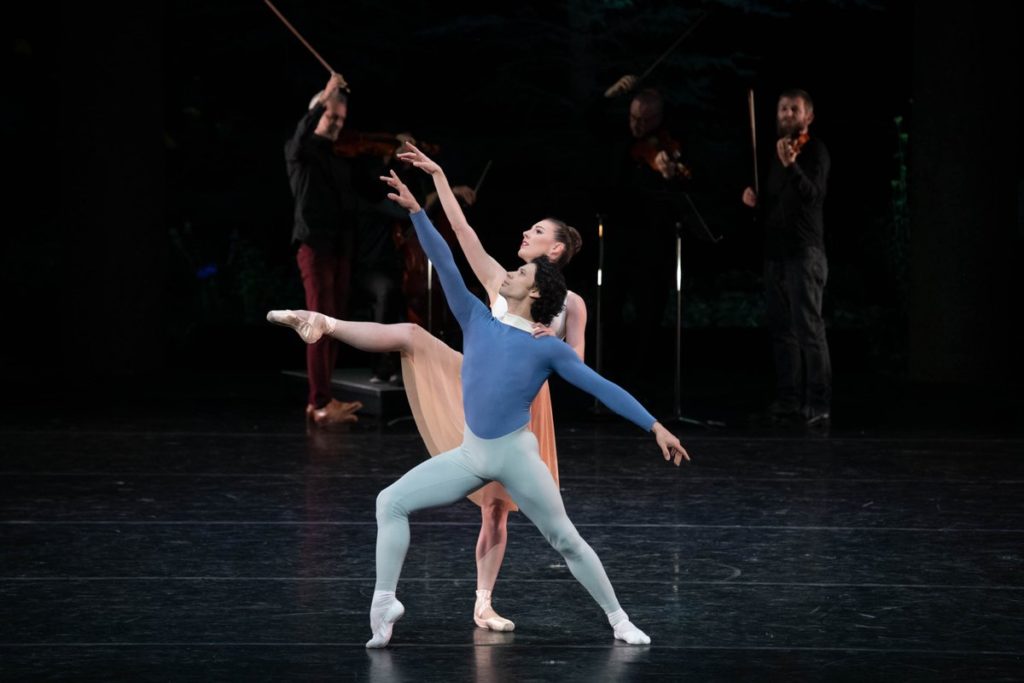THE HANGOVER REPORT – City Center’s FALL FOR DANCE FESTIVAL concludes with a starry flourish
- By drediman
- October 27, 2021
- No Comments
Last weekend, New York City Center’s Fall for Dance Festival concluded as it began – with a flourish, and a starry and well-curated one at that. Here are my thoughts on the festival’s fifth and final program.

The evening began with a pair of short works by Alexei Ratmansky and Justin Peck, two of the most regularly sought after classical ballet choreographers working today. Although Ratmansky’s Fandango was originally designed with the female body in mind (both Wendy Whelan and Sara Mearns have made a splash in the piece), last weekend’s performance was danced by a male dancer – New York City Ballet’s up-and-comer Roman Mejia. Mr. Mejia possesses that extra sparkle and natural onstage charisma that made Joaquín De Luz such a joy to watch during his celebrated career, which are assets in Ratmansky’s showy solo. Although the steps are intricate and full of character, they also allow the overall shape of the dance to breathe with the Luigi Boccherini‘s Spanish score (played with infectious energy by an excellent onstage band), qualities which the young dancer responded to with great maturity and freedom. Indeed, Mr. Mejia danced joyously throughout, exuding effortless amplitude yet taking inspired interpretive liberties with the choreography. His is a career to watch out for.

The next piece was the New York premiere of Peck’s anticipated pas de deux Bloom, which was co-commissioned by New York City Center and Vail Dance Festival and designed for the virtuosic talents of New York City Ballet’s Tiler Peck and American Ballet Theatre’s Herman Cornejo. It was exciting to see these marquee movers paired with each other, especially in a piece that challenges them as technicians. Despite the thrill of watching them execute the choreography’s razor sharp requirements with exciting bravado, I was even more impressed by the fact that Mr. Cornejo’s cool swagger and Ms. Peck’s uncanny musicality were able to shine through – brilliantly – despite the high level of difficulty of the choreography. With its clean, precise lines and prescriptive construction, Bloom – which is set to Caroline Shaw’s beguiling score for string quartet (played live by onstage Brooklyn Rider) – leaves relatively little room for interpretation or the imagination, which is in clear contrast to Ratmansky’s organic, almost improvisational work in Fandango.

The program concluded with the evening’s meatiest work – the world premiere of Ayodele Casel’s Where We Dwell, which was commissioned by City Center for Fall for Dance. I have fond memories of Ms. Casel’s joyous Chasing Magic, which was streamed by The Joyce Theater during the pandemic. Although energizing and upbeat, Where We Dwell also has more somber things on its mind, particularly as it relates to social and racial equality. Luckily, Ms. Casel doesn’t hit the audience over the head with righteousness, but instead focuses on positivity and empowerment. The work features eight skilled and idiosyncratic tap dancers, who integrate themselves in various configurations over the course of the dance, thereby adhering to the dynamic progression of the work’s stage tableaus (the direction and staging is attributed to Torya Beard). Continuing the evening’s wonderful trend of live music, the piece features soulful music by Crystal Monee Hall, which was smoothly performed by Ms. Hall (vocals), Kiesel Jiménez (percussion), and Maya Kronfeld (piano).
RECOMMENDED
FALL FOR DANCE FESTIVAL: PROGRAM 5
Dance
New York City Center
Approximately 90 minutes (without an intermission)
Closed

 Copyright © 2025
Copyright © 2025
Leave a Reply